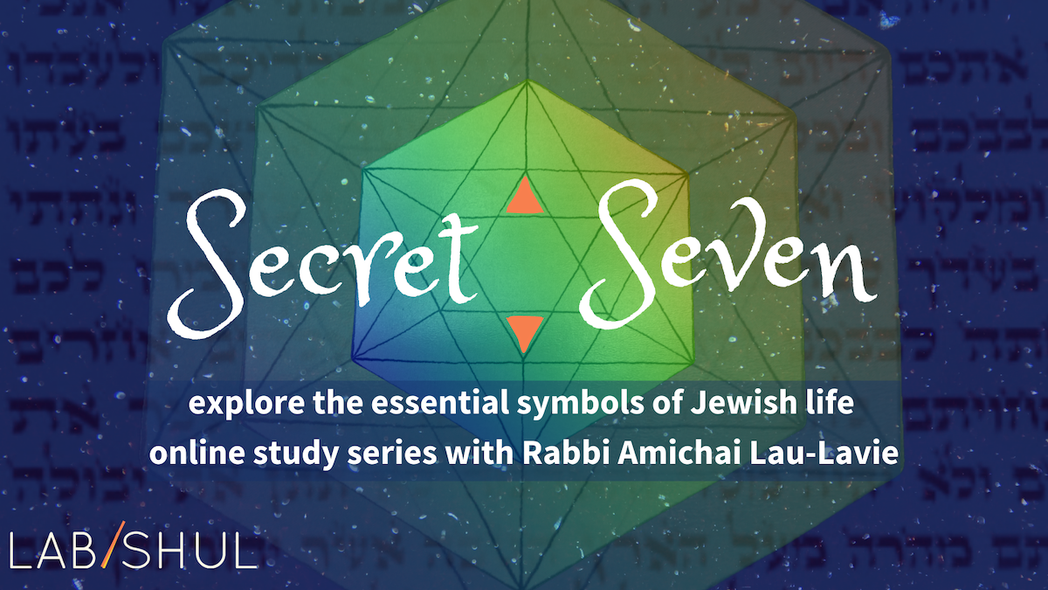Badge of holy honor, symbol of political persecution, or Erotic emblem? Vilified and valorized, the best known contemporary Jewish symbol is not as old as you’d think, but ancient enough to carry multiple meanings. How did this mystical medieval shield of magical powers become the emblem of national pride? Join us to learn more about the Star of David through the lens of the surprising theories of Gershon Scholem, the greatest scholar of Kabbalah in the 20th Century.
“The claim is that we are banning Jewish symbols, which is entirely untrue,” Horowitz and another organizer, Rae Gaines, wrote in the Washington Blade, in response to other media coverage. “We are asking people to not bring nationalist symbols because violent nationalism does not fit with our vision of queer liberation. And because we need the march to be a space that is as welcoming to Palestinian Dykes as it is to Jewish Dykes.”
The Pride flag with the Star of David very closely resembles the Israeli flag, they wrote, and they said the star itself became a major symbol of Judaism only with the beginnings of Zionism in the late 19th century. “That being said, the Star of David represents more than just Israel when not on a flag and can be brought to the march in many other forms without question,” they added. “It is not the only symbol available to us. We welcome yarmulkes, tallitot, tefillin, rainbow pomegranates, Lions of Judah, Hamsas, chai, a menorah and anything that doesn’t directly replicate nationalist images and symbols.”
DC Dykes March Bans Rainbow Star of David, The Advocate, 2019
The Pride flag with the Star of David very closely resembles the Israeli flag, they wrote, and they said the star itself became a major symbol of Judaism only with the beginnings of Zionism in the late 19th century. “That being said, the Star of David represents more than just Israel when not on a flag and can be brought to the march in many other forms without question,” they added. “It is not the only symbol available to us. We welcome yarmulkes, tallitot, tefillin, rainbow pomegranates, Lions of Judah, Hamsas, chai, a menorah and anything that doesn’t directly replicate nationalist images and symbols.”
DC Dykes March Bans Rainbow Star of David, The Advocate, 2019
Star of David
I am loath
to open the archival box
in which it is kept.
Yet I can not resist
and delicately
lift the top
to find white gauze
beneath which is a hint
of yellow,
a precious jewel.
I unwrap it slowly, the infamous
word,
Jude,
so naked,
so innocent,
so dark,
the graceful letters
set against the yellow star.
Where has it been,
this scrap of cloth?
Who wore it, long forgotten,
in which ghetto?
Go ahead,
try to calculate
its weight,
resting in my hand,
a swallowtail that can
no longer fly.
Rick Black, from his book Star of David
I am loath
to open the archival box
in which it is kept.
Yet I can not resist
and delicately
lift the top
to find white gauze
beneath which is a hint
of yellow,
a precious jewel.
I unwrap it slowly, the infamous
word,
Jude,
so naked,
so innocent,
so dark,
the graceful letters
set against the yellow star.
Where has it been,
this scrap of cloth?
Who wore it, long forgotten,
in which ghetto?
Go ahead,
try to calculate
its weight,
resting in my hand,
a swallowtail that can
no longer fly.
Rick Black, from his book Star of David
3. The six-pointed star known as the Magen David or Shield of David, which is now emblazoned on the flag of the State of Israel, is from every point of view a cause for astonishment. Where did the symbol originate, and what is its true meaning? In the scholarly literature, as well as the popular, truth and fantasy are mingled. Writers on the subject confuse the authentic tradition of the symbol, which they do not understand very well, with their own speculations, some of which are very far-fetched indeed: in sum, each man interprets the Magen David as he pleases.
One commentator says: this is the symbol of Judaism, of the religious and intellectual universe of monotheism. Another says: it is the pure symbol of the Jewish national community. Some say: it is the symbol of the wars of the Kings of the House of David, while still others say: it is the symbol of eternal harmony and peace, the unification of opposites and their subordination to the principle of unity. What is common to all these interpretations is that their daring is matched only by their ineptness.
The Shield of David is indeed a wondrous symbol, stimulating the intellect and arousing the passion for speculation. And whose heart is not stirred to illuminate the dark depths, each man according to the latest encyclopedia at his disposal? Blessed be He Who succors the poor. Who has shown us wonders by His grace, and has not locked the gates of pious homiletics.
The true history of the six-pointed star and its ascent to the rank of a symbol in Israel is bound up with what is called Practical Cabala, which is nothing more than Jewish magic, whose links with the theoretical doctrines of the Cabalists were always weak. Particularly, it is bound up with the use of amulets and talismans.
In this area a strong reciprocal influence was at work between the Jews and Gentiles, for nothing is more international than magic. Magic signs and designs pass from one people to another, just as “sacred” (i.e., incomprehensible) combinations of “names” wander back and forth, and frequently become corrupted in their wanderings. In general, magic signs like these were called “seals” in our literature, not only because they were frequently engraved on rings—the production of magical rings of this kind was a well defined trade, and we have textbooks in this science—but also because of the common attitude that a man “seals himself” with these signs and protects himself against the assaults of evil spirits.
…It was not, therefore, not as a symbol of the monotheistic faith that the six-pointed star began its Jewish career, but as a magical talisman for protection against the evil spirits; and this remained its primary meaning among the masses of the people until about a hundred years ago.
…In the course of the years the magical mezuzah was forgotten, but the two forms of the “Seal of Solomon” are preserved in the magical literature of all three religions. Anyone who looks into the Renaissance books on magical practices, like Solomon’s Key or the literature ascribed to the legendary magician Dr. Faustus, will find them used in many connections. Though the magical mezuzah went out of use after the Middle Ages, the figures served as a talisman in other amulets, some of which attained great popularity—like the famous amulet for putting out fires, on which was written the verse—“And the people cried unto Moses; and Moses prayed unto the Lord, and the fire abated”—around the Shield of David, in the center of which was written the formula AGLA, the initial Hebrew letters of the verse “Thou art mighty forever, O Lord.”
Where does this title, the “Shield of David,” come from, and what does it mean? It is known that among the medieval mystics some legends were current about King David’s shield and its magical powers. The earliest source is the Book of Desire, which is an interpretation of the seventy magical names of Metatron, Prince of the Divine Presence. The book was composed in Germany in the 13th century, in the circle of the German Hasidim, by Eleazar of Worms or one of his disciples. In it we read how King David had a golden shield, upon which was engraved the Great Name of seventy-two names (a combination of holy names by whose virtue, the Midrash tells us, Israel was redeemed from Egypt); and beneath was engraved the “name” of Taphtephajah, one of the names of the Prince of the Presence. “And when a man is at war and his enemies attack him, let him remember it and he will be saved,” for the same book tells us that the numerical value of the Hebrew letters of Taphtephajah is the same as that of the letters of “upon the shield.”
…In the early years of the 14th century there was composed in Spain the Book of the Boundary, by David ben Judah the Pious, a grandson of Nachmanides. In this book, which has been preserved only in manuscript, we twice find the design of the two crossed triangles, both times called the Shield of David, once the “Macrocosmic Shield of David” and once the “Microcosmic Shield of David.” Beneath the pictures of the Shield is written the “name,” Taphtephajah, which proves its intimate connection with the tradition concerning King David’s Shield in the Book of Desire.
It was at the beginning of the 18th century that the term “Shield of David” assumed the fixed meaning it bears today. The Christians began to use this term, and we have a number of booklets from that period, in Latin and German, containing explanations of the Star of David and allegorical sermons on it, in the spirit of the alchemists.
Homilies like these were entirely foreign to the spirit of the Jewish preachers of that generation. Nonetheless, even among them there was one who began to interpret it as the symbol of the Kingdom of the House of David. Abraham Hayyim ha-Cohen, of Nikolsburg, wrote in his commentary on Psalms, which was first printed in 1750: “For there was a difference between the shields of the kings of Israel and those of the Kingdom of the House of David, in that the kings of Israel had a shield with three sides [i.e., triangular] to show that the House of David had a valid claim to the quality of kingship.” We have here, then, an interpretation of the symbol, not as a talisman, but as representing kingship—the Emanation of Kingship, which is the Congregation of Israel above and the Kingdom of the House of David below.
Indeed, we find a similar interpretation again in a very striking context, in which the magical career of the Shield of David reached its zenith. Here the symbol casts off its swaddling clothes of magic to rise to the vision of approaching redemption as proclaimed by the “false Messiah” of the 17th century, Sabbatai Zevi. This critical turning point is concealed in the celebrated amulets of R. Jonathan Eybeschuetz. All his amulets include the Shield of David (the only image to be found in them), in which are inscribed formulas like “Seal” alone, or “Seal of MBD,” or “Seal of MBID,” or even “Seal of the God of Israel.” In his defense of these amulets, R. Jonathan took refuge behind the magical meaning of the image, and he denied any symbolic value to this sign from a Jewish point of view. It was not so with those who sought to decipher his amulets. They explained his predilection for this image by its Sabbatian significance: their interpretation was that for R. Jonathan the Shield of David had become a messianic symbol.
When, in 1627, Emperor Ferdinand II approved again the old seal of the Prague community, outside the six sides of the star was spelled out, M-a-G-e-N D-a-V-i-D, with one consonant in each of the six spaces. From then on the six-pointed Shield of David is used communally in a number of different places in Prague: on the seals of societies and individuals, on tombstones, on synagogue structures and the ironwork of the synagogue bimah, on the tower of the Jewish council’s building.
From Prague this official use of the symbol spread out.
Apparently the prime motive for the remarkably wide diffusion of the Shield of David in the 19th century was the desire to imitate Christianity: the Jews of the era of Emancipation, seeing the “symbol of Christianity” everywhere, sought a “symbol of Judaism.” If Judaism is the “Mosaic religion,” why should it not properly have a striking and simple sign of recognition, like the other religions? The new emancipated Jews desired to erect above the walls of the synagogue something resembling the symbol of the cross, and this is what led to the ascendancy of the Shield of David in the 19th century, and helped it to become widely used on ceremonial objects as well. It was from the enlightened West that the symbol of Jewishness passed to Poland and Russia.
The use of amulets was still very widespread, especially in the East, and the devout did not trouble themselves with complex thoughts; the mimicry of Christianity inherent in the choice of the symbol was confused with its talismanic and magical properties, to which they had become accustomed—especially the simple folk—from countless amulets. Thenceforth the Shield of David began to be introduced everywhere—on the walls, on the windows and roofs of synagogues, on tombstones and medals—as though it were from Sinai. In their pursuit of a useful symbol and in their impulse toward mimicry, it did not occur to the builders of the new synagogues that intrinsically the symbol did not stand for anything, or for very little, of the world of Judaism, and consequently that it did not have the deep roots, drenched in meaning, of the cross in the religious world of Christianity.
Then the Zionists came, seeking to restore the ancient glories—or more correctly, to change the face of their people. When they chose it as a symbol for Zionism at the Basle Congress of 1897, the Shield of David was possessed of two virtues that met the requirements of men in quest of a symbol: on the one hand, its wide diffusion during the previous century—its appearance on every new synagogue, on the stationery of many charitable organizations, etc.—had made it known to everybody; and on the other, it was not explicitly identified with a religious association in the consciousness of their contemporaries. This lack became its virtue. The symbol did not arouse memories of the past: it could be filled with hope for the future.
But even Zionism did not do so much to confer the sacredness of a true symbol on the Shield of David as did that mad dictator who made of it a badge of shame for millions of our people, who compelled them to wear it publicly on their clothing as the badge of exclusion and of eventual extermination. Under this sign they moved along the road of horror and degradation, struggle and heroism. If there be such a thing as a soil that grows meaning for symbols, this is it. Some have said: the sign under which they went to destruction and to the gas chambers deserves to be discarded for a sign that will signify life. But it is also possible to think in the opposite fashion: the sign that in our days was sanctified by suffering and torture has won its right to be the sign that will light up the road of construction and life. “The going down is the prelude to the raising up”; where it was humbled, there will you find it exalted.
Gershom Scholem, The Curious History of the Six Pointed Star
One commentator says: this is the symbol of Judaism, of the religious and intellectual universe of monotheism. Another says: it is the pure symbol of the Jewish national community. Some say: it is the symbol of the wars of the Kings of the House of David, while still others say: it is the symbol of eternal harmony and peace, the unification of opposites and their subordination to the principle of unity. What is common to all these interpretations is that their daring is matched only by their ineptness.
The Shield of David is indeed a wondrous symbol, stimulating the intellect and arousing the passion for speculation. And whose heart is not stirred to illuminate the dark depths, each man according to the latest encyclopedia at his disposal? Blessed be He Who succors the poor. Who has shown us wonders by His grace, and has not locked the gates of pious homiletics.
The true history of the six-pointed star and its ascent to the rank of a symbol in Israel is bound up with what is called Practical Cabala, which is nothing more than Jewish magic, whose links with the theoretical doctrines of the Cabalists were always weak. Particularly, it is bound up with the use of amulets and talismans.
In this area a strong reciprocal influence was at work between the Jews and Gentiles, for nothing is more international than magic. Magic signs and designs pass from one people to another, just as “sacred” (i.e., incomprehensible) combinations of “names” wander back and forth, and frequently become corrupted in their wanderings. In general, magic signs like these were called “seals” in our literature, not only because they were frequently engraved on rings—the production of magical rings of this kind was a well defined trade, and we have textbooks in this science—but also because of the common attitude that a man “seals himself” with these signs and protects himself against the assaults of evil spirits.
…It was not, therefore, not as a symbol of the monotheistic faith that the six-pointed star began its Jewish career, but as a magical talisman for protection against the evil spirits; and this remained its primary meaning among the masses of the people until about a hundred years ago.
…In the course of the years the magical mezuzah was forgotten, but the two forms of the “Seal of Solomon” are preserved in the magical literature of all three religions. Anyone who looks into the Renaissance books on magical practices, like Solomon’s Key or the literature ascribed to the legendary magician Dr. Faustus, will find them used in many connections. Though the magical mezuzah went out of use after the Middle Ages, the figures served as a talisman in other amulets, some of which attained great popularity—like the famous amulet for putting out fires, on which was written the verse—“And the people cried unto Moses; and Moses prayed unto the Lord, and the fire abated”—around the Shield of David, in the center of which was written the formula AGLA, the initial Hebrew letters of the verse “Thou art mighty forever, O Lord.”
Where does this title, the “Shield of David,” come from, and what does it mean? It is known that among the medieval mystics some legends were current about King David’s shield and its magical powers. The earliest source is the Book of Desire, which is an interpretation of the seventy magical names of Metatron, Prince of the Divine Presence. The book was composed in Germany in the 13th century, in the circle of the German Hasidim, by Eleazar of Worms or one of his disciples. In it we read how King David had a golden shield, upon which was engraved the Great Name of seventy-two names (a combination of holy names by whose virtue, the Midrash tells us, Israel was redeemed from Egypt); and beneath was engraved the “name” of Taphtephajah, one of the names of the Prince of the Presence. “And when a man is at war and his enemies attack him, let him remember it and he will be saved,” for the same book tells us that the numerical value of the Hebrew letters of Taphtephajah is the same as that of the letters of “upon the shield.”
…In the early years of the 14th century there was composed in Spain the Book of the Boundary, by David ben Judah the Pious, a grandson of Nachmanides. In this book, which has been preserved only in manuscript, we twice find the design of the two crossed triangles, both times called the Shield of David, once the “Macrocosmic Shield of David” and once the “Microcosmic Shield of David.” Beneath the pictures of the Shield is written the “name,” Taphtephajah, which proves its intimate connection with the tradition concerning King David’s Shield in the Book of Desire.
It was at the beginning of the 18th century that the term “Shield of David” assumed the fixed meaning it bears today. The Christians began to use this term, and we have a number of booklets from that period, in Latin and German, containing explanations of the Star of David and allegorical sermons on it, in the spirit of the alchemists.
Homilies like these were entirely foreign to the spirit of the Jewish preachers of that generation. Nonetheless, even among them there was one who began to interpret it as the symbol of the Kingdom of the House of David. Abraham Hayyim ha-Cohen, of Nikolsburg, wrote in his commentary on Psalms, which was first printed in 1750: “For there was a difference between the shields of the kings of Israel and those of the Kingdom of the House of David, in that the kings of Israel had a shield with three sides [i.e., triangular] to show that the House of David had a valid claim to the quality of kingship.” We have here, then, an interpretation of the symbol, not as a talisman, but as representing kingship—the Emanation of Kingship, which is the Congregation of Israel above and the Kingdom of the House of David below.
Indeed, we find a similar interpretation again in a very striking context, in which the magical career of the Shield of David reached its zenith. Here the symbol casts off its swaddling clothes of magic to rise to the vision of approaching redemption as proclaimed by the “false Messiah” of the 17th century, Sabbatai Zevi. This critical turning point is concealed in the celebrated amulets of R. Jonathan Eybeschuetz. All his amulets include the Shield of David (the only image to be found in them), in which are inscribed formulas like “Seal” alone, or “Seal of MBD,” or “Seal of MBID,” or even “Seal of the God of Israel.” In his defense of these amulets, R. Jonathan took refuge behind the magical meaning of the image, and he denied any symbolic value to this sign from a Jewish point of view. It was not so with those who sought to decipher his amulets. They explained his predilection for this image by its Sabbatian significance: their interpretation was that for R. Jonathan the Shield of David had become a messianic symbol.
When, in 1627, Emperor Ferdinand II approved again the old seal of the Prague community, outside the six sides of the star was spelled out, M-a-G-e-N D-a-V-i-D, with one consonant in each of the six spaces. From then on the six-pointed Shield of David is used communally in a number of different places in Prague: on the seals of societies and individuals, on tombstones, on synagogue structures and the ironwork of the synagogue bimah, on the tower of the Jewish council’s building.
From Prague this official use of the symbol spread out.
Apparently the prime motive for the remarkably wide diffusion of the Shield of David in the 19th century was the desire to imitate Christianity: the Jews of the era of Emancipation, seeing the “symbol of Christianity” everywhere, sought a “symbol of Judaism.” If Judaism is the “Mosaic religion,” why should it not properly have a striking and simple sign of recognition, like the other religions? The new emancipated Jews desired to erect above the walls of the synagogue something resembling the symbol of the cross, and this is what led to the ascendancy of the Shield of David in the 19th century, and helped it to become widely used on ceremonial objects as well. It was from the enlightened West that the symbol of Jewishness passed to Poland and Russia.
The use of amulets was still very widespread, especially in the East, and the devout did not trouble themselves with complex thoughts; the mimicry of Christianity inherent in the choice of the symbol was confused with its talismanic and magical properties, to which they had become accustomed—especially the simple folk—from countless amulets. Thenceforth the Shield of David began to be introduced everywhere—on the walls, on the windows and roofs of synagogues, on tombstones and medals—as though it were from Sinai. In their pursuit of a useful symbol and in their impulse toward mimicry, it did not occur to the builders of the new synagogues that intrinsically the symbol did not stand for anything, or for very little, of the world of Judaism, and consequently that it did not have the deep roots, drenched in meaning, of the cross in the religious world of Christianity.
Then the Zionists came, seeking to restore the ancient glories—or more correctly, to change the face of their people. When they chose it as a symbol for Zionism at the Basle Congress of 1897, the Shield of David was possessed of two virtues that met the requirements of men in quest of a symbol: on the one hand, its wide diffusion during the previous century—its appearance on every new synagogue, on the stationery of many charitable organizations, etc.—had made it known to everybody; and on the other, it was not explicitly identified with a religious association in the consciousness of their contemporaries. This lack became its virtue. The symbol did not arouse memories of the past: it could be filled with hope for the future.
But even Zionism did not do so much to confer the sacredness of a true symbol on the Shield of David as did that mad dictator who made of it a badge of shame for millions of our people, who compelled them to wear it publicly on their clothing as the badge of exclusion and of eventual extermination. Under this sign they moved along the road of horror and degradation, struggle and heroism. If there be such a thing as a soil that grows meaning for symbols, this is it. Some have said: the sign under which they went to destruction and to the gas chambers deserves to be discarded for a sign that will signify life. But it is also possible to think in the opposite fashion: the sign that in our days was sanctified by suffering and torture has won its right to be the sign that will light up the road of construction and life. “The going down is the prelude to the raising up”; where it was humbled, there will you find it exalted.
Gershom Scholem, The Curious History of the Six Pointed Star
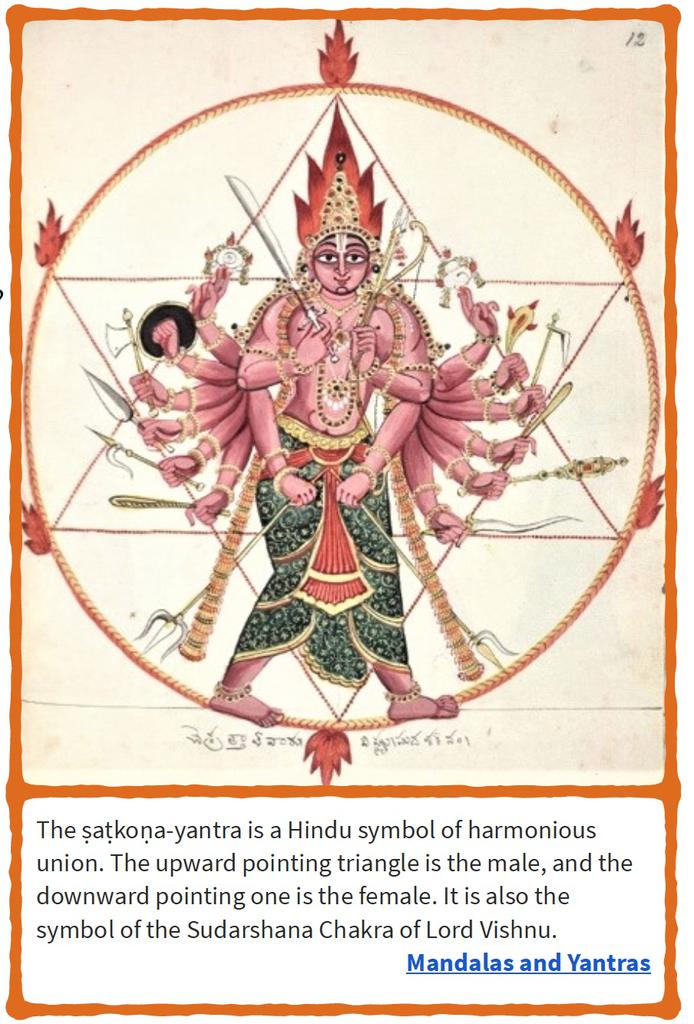
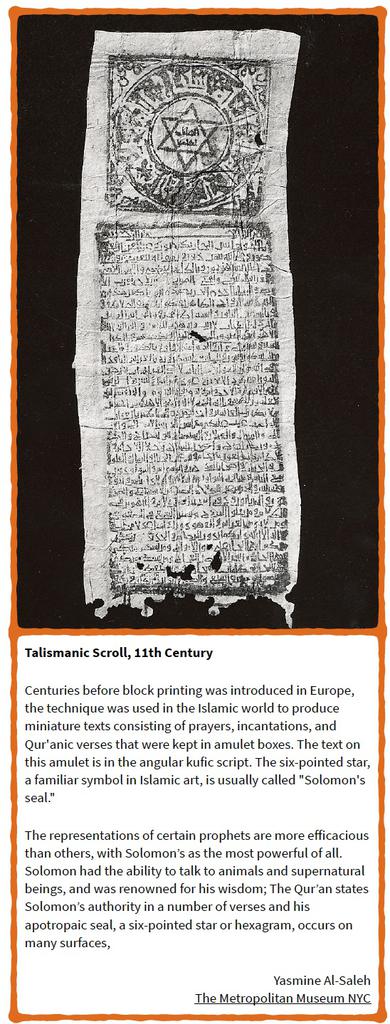
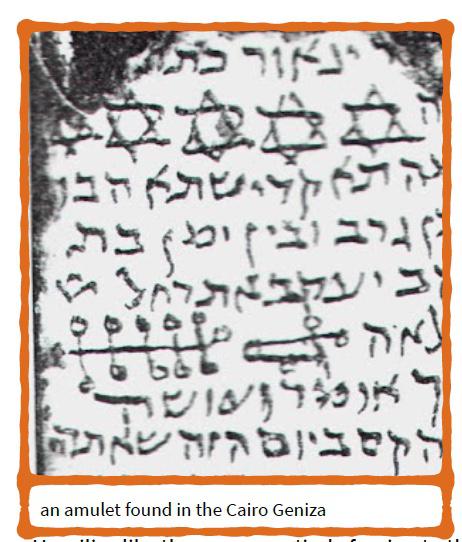
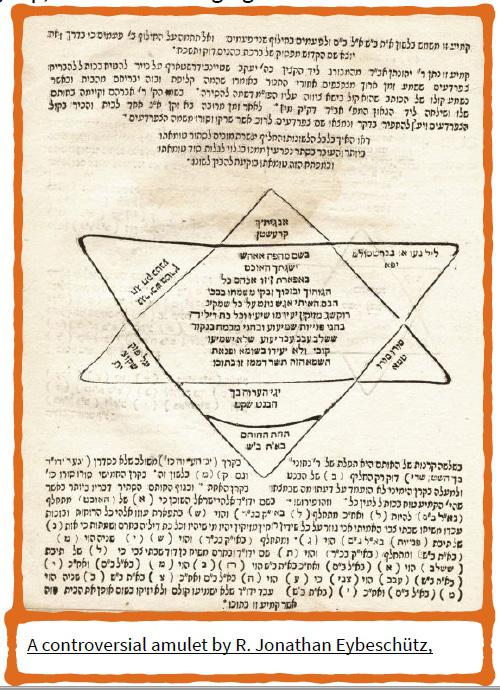
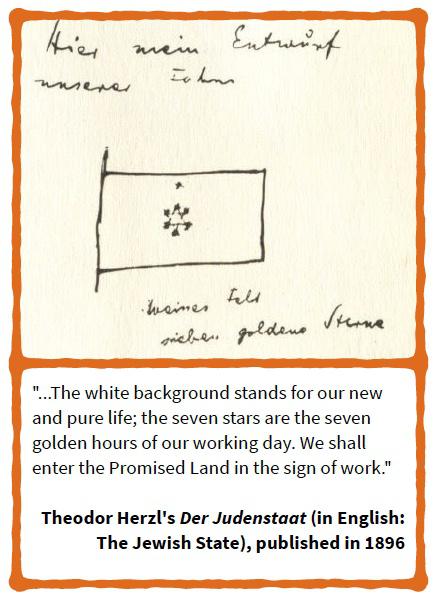
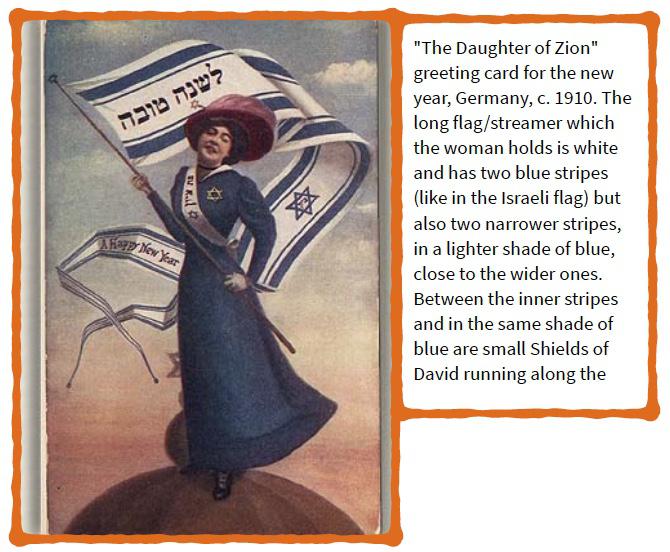
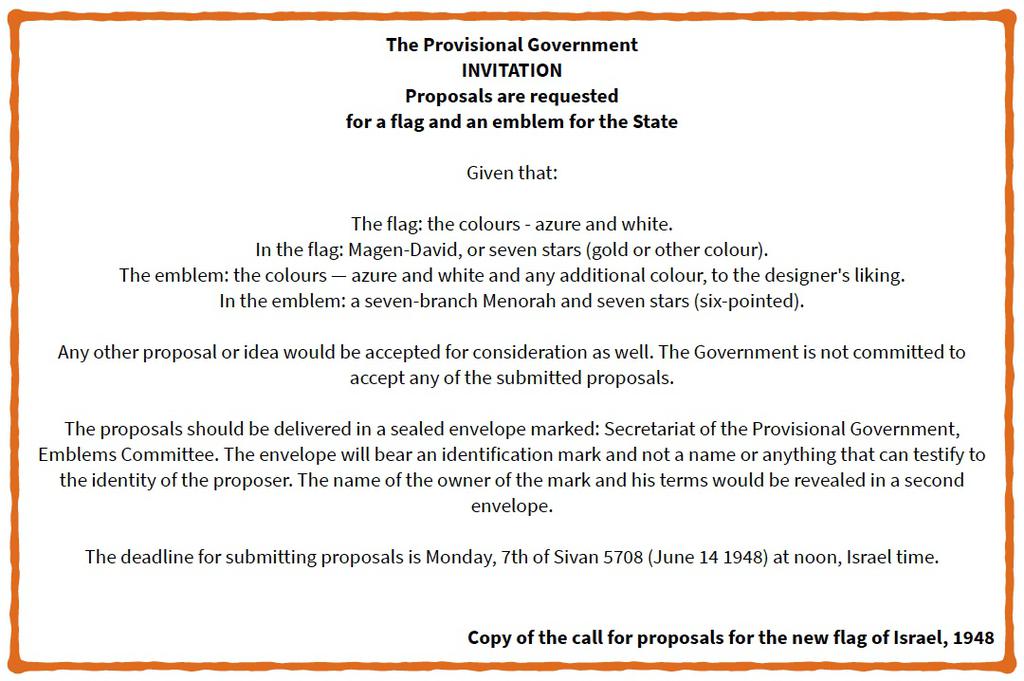

There is not, Rosenzweig insists, a single all-encompassing essence but three primal and irreducible entities which in their original state stand unrelated to each other: God, man, and world. They form the immutable points of a triangle that symbolizes the “pre-cosmos,” as Rosenzweig terms it. Despite all efforts, human reason remains unable to reduce their essential disparity. Pagan attempts to bring the points out of isolation—and Rosenzweig illustrates with abundant examples—have produced the mythical view of God, the plastic world of art, and the tragic, heroic man—but they have failed to bridge the chasms of isolation.
The three entities can be brought into real relationship only by the initiative of God, expressed first in the act of creation. For Rosenzweig, creation means God’s affirmation of the world, His summoning it into genuine existence and sustaining it in the relationship of creator and creature. As in creation God tears the world out of primordial seclusion, so in revelation God’s voice breaks through the isolation surrounding man as He turns to His creature in love.
God’s only commandment is to requite the love. He says to man: “Love Me,” and nothing more. Yet out of this love is born a sense of sinfulness, for the first time a genuine soul, and an anguished prayer for the coming of the Kingdom which will universalize such love. More importantly, there arises out of God’s love the turning in love to neighbor and hence the task of “ensouling” the world. Man himself works at constructing the final link, that between man and world, whose goal is redemption—the ultimate all-embracing unity which philosophy posits at the beginning but Rosenzweig allows only at the messianic end. Thus, as the second triangle of creation, revelation, and redemption is superimposed inversely upon the first, a star takes shape which for Rosenzweig is no mere ethnic ensign of Judaism but the ultimate ontological symbol.
Michael A. Meyer
The Star of Redemption by Franz Rosenzweig
The three entities can be brought into real relationship only by the initiative of God, expressed first in the act of creation. For Rosenzweig, creation means God’s affirmation of the world, His summoning it into genuine existence and sustaining it in the relationship of creator and creature. As in creation God tears the world out of primordial seclusion, so in revelation God’s voice breaks through the isolation surrounding man as He turns to His creature in love.
God’s only commandment is to requite the love. He says to man: “Love Me,” and nothing more. Yet out of this love is born a sense of sinfulness, for the first time a genuine soul, and an anguished prayer for the coming of the Kingdom which will universalize such love. More importantly, there arises out of God’s love the turning in love to neighbor and hence the task of “ensouling” the world. Man himself works at constructing the final link, that between man and world, whose goal is redemption—the ultimate all-embracing unity which philosophy posits at the beginning but Rosenzweig allows only at the messianic end. Thus, as the second triangle of creation, revelation, and redemption is superimposed inversely upon the first, a star takes shape which for Rosenzweig is no mere ethnic ensign of Judaism but the ultimate ontological symbol.
Michael A. Meyer
The Star of Redemption by Franz Rosenzweig





